Early Verdict
WD's new in-house NVMe controller is a big win, but cheaper emerging products leave the Black 3D NVMe SSD with poor pricing at launch. It's like seeing an iceberg on the horizon. Hopefully WD can maneuver the ship in time.
Pros
- +
Impressive first-generation controller design
- +
High performance overall
- +
High quality
- +
Software bundle with Dashboard features
- +
Strong endurance for large capacities
Cons
- -
Some performance anomalies
- -
Expensive compared to emerging products
- -
Could use some additional firmware tuning
Why you can trust Tom's Hardware
Specifications & Pricing
What is the secret to success? In the SSD business, it's vertical integration. That means designing all of the important components so they can work together to deliver the best possible performance and reliability at a low price point. In the past, only Samsung, Toshiba, and Intel produced their own flash and SSD controllers. Now, thanks to subsidiary SanDisk, Western Digital joins the club.

WD's new Black 3D NVMe SSD comes equipped with a new proprietary SSD controller that serves as the foundation of a far-reaching initiative, so several more enhancements will come in time. The initial launch includes two controllers: the high-performance version we will see today and a power efficient DRAM-less version for the embedded market. WD introduced the latter on the PC SN520 SSD just a few weeks ago.
The new controller comes at an odd time. Any new controller is a welcome addition to the market, but Western Digital could have used the controller with its previous-generation WD Black PCIe SSD. Unfortunately, that SSD suffered from poor performance thanks to a lackluster Marvell controller. WD had to choose between two evils during the design process, though. There simply wasn't a high-performance third-party controller available to build an NVMe SSD, so the company had to choose between dual-core Marvell and SMI controllers. Neither controller produces enthusiast-class performance.
Now, after three years in development, WD's new proprietary SSD controller is ready to take the company's enthusiast-class SSDs to the next level.
Specifications
The WD Black 3D NVMe SSD, which we'll refer to as the Black, comes to market in three capacities that span from 1TB to 250GB. The SanDisk Extreme Pro NVMe SSD, which has identical hardware, will come to market with 1TB and 500GB capacities. The Extreme Pro is designed for "creatives" while the Black is for gamers, enthusiasts, and power users.
On paper, the new Black delivers up to 3,400/2,800 MB/s of sequential read/write throughput thanks to the PCI Express 3.0 x4 interface paired with the latest NVMe 1.3 protocol. As expected, the two smaller drives lose some sequential write performance. The 1TB model pushes up to 500,000/400,000 random read/write IOPS, but we also see reduced random performance with the smaller models. Unlike some of its competitors, Western Digital advertises the performance for all three models separately.
WD paired the new controller with its 64-layer BICS TLC NAND that has already proven itself in other products. We've detailed BiCS flash, which is jointly produced by WD and Toshiba, several times already. Toshiba sent us the XG5 NVMe SSD with BICS flash in 2017.
Get Tom's Hardware's best news and in-depth reviews, straight to your inbox.
Features
WD's new NVMe controller is the real news today. It should power WD's new products for several years, including QLC SSDs that could debut as early as 2019. WD chose a 28nm tri-core design to target the same market Samsung addresses with the 960 EVO. Samsung uses a five-core ARM design for the 960 Pro and various enterprise variants.
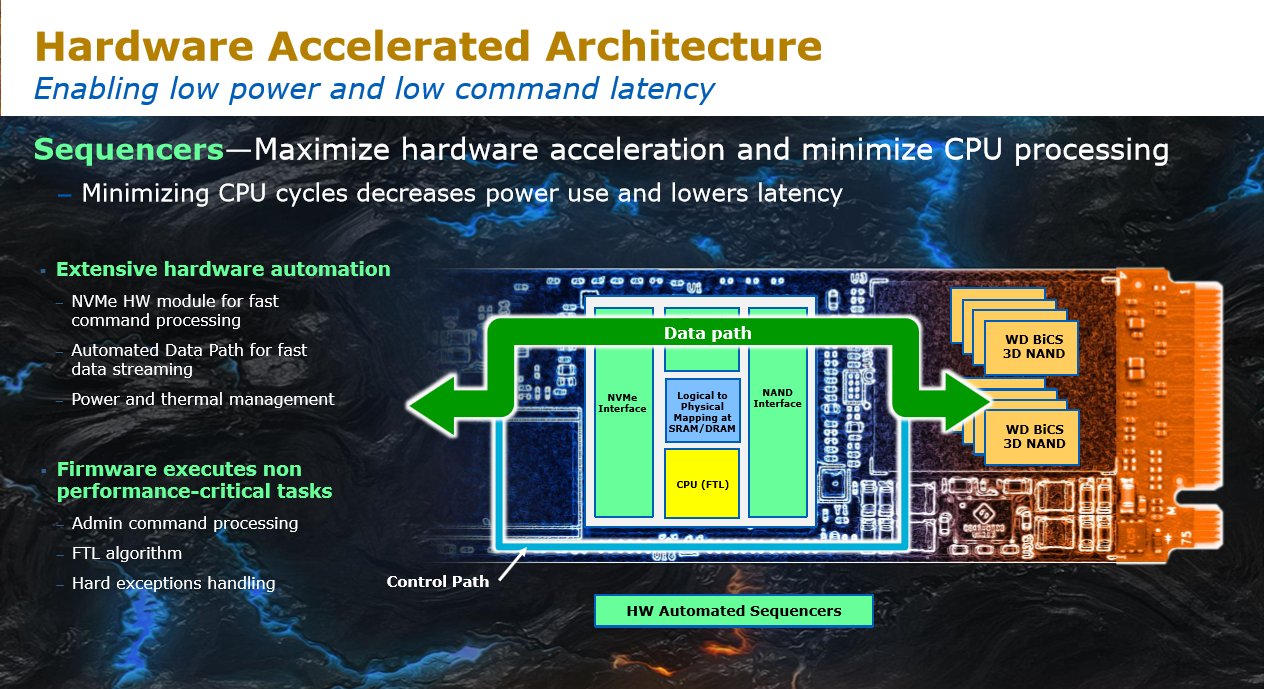
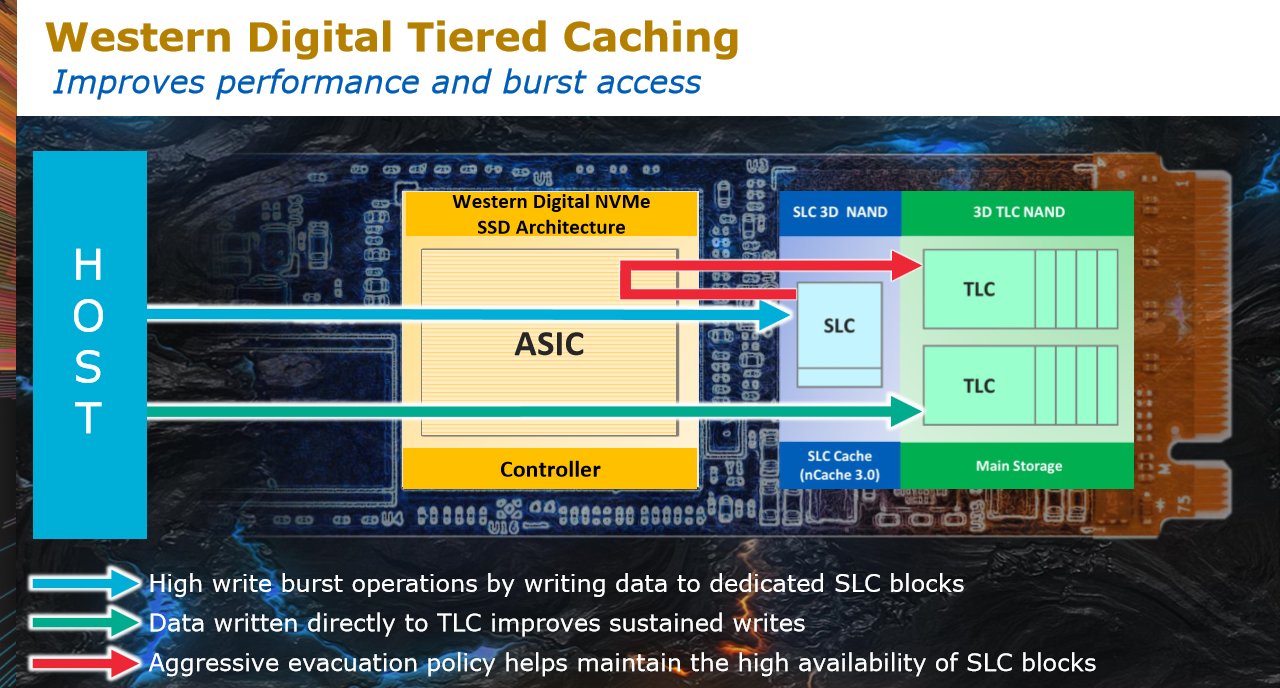
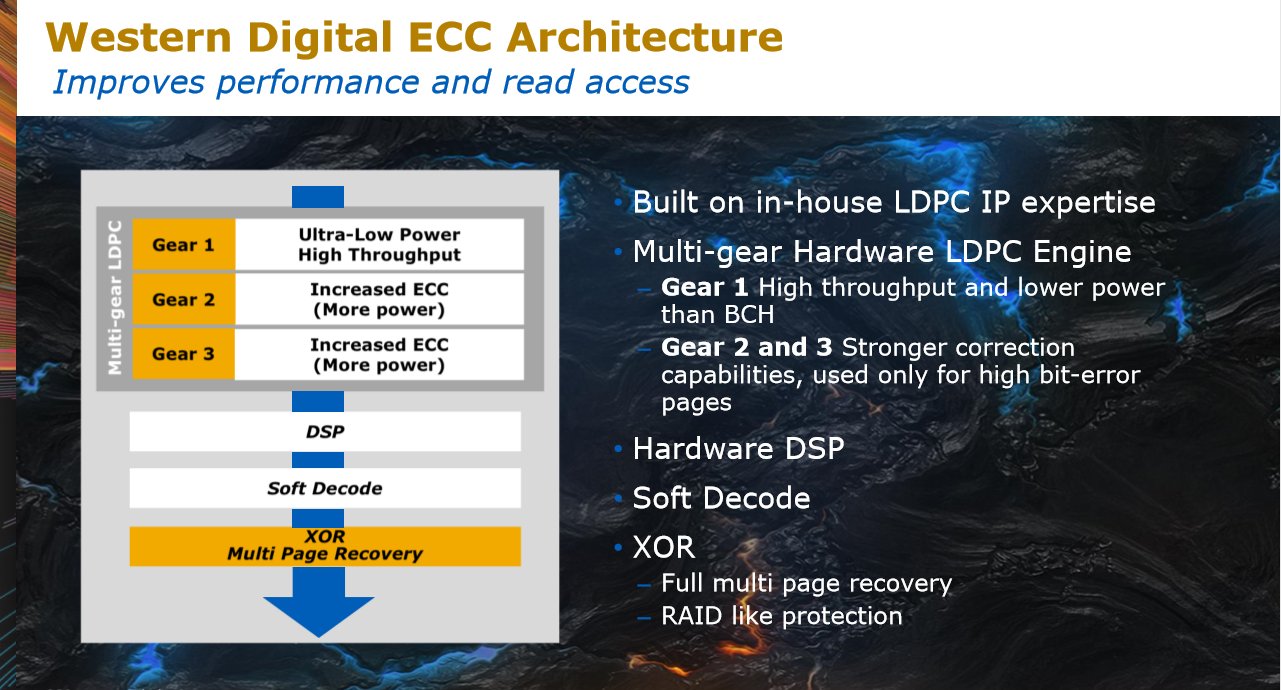
WD designed its new controller to allow some data to pass through the processor without consuming clock cycles for data processing. This technique reduces temperature and power consumption while increasing performance.
SanDisk also updated its nCache to version 3. This is the company's proprietary intelligent cache that assigns a portion of the NAND to operate as SLC, which boosts performance. The drives have a fixed amount of SLC-programmed flash, so smaller drives have less cache.
The Black's SSD controller passes most of the incoming write operations directly to the SLC cache, but that isn't always ideal. Some SSDs force all the incoming data to pass through the cache before it transfers the data to the primary TLC storage pool. That can slow transfer speeds if the SLC cache is already saturated with incoming data. To circumvent this problem, WD's controller can write directly to the TLC flash if needed. This eliminates the process of flushing the SLC cache before accepting new data. In our opinion, this is more favorable. Our internal tests have proven that bypassing the cache is faster when you transfer large files, like Blu-Ray ISOs, from another high-speed storage device. Writing data directly to the TLC flash increases flash wear, so WD struck a balance between the two techniques.
SSD caching policies can be a double-edged sword. If data remains in the cache for an extended period of time it increases the odds of a "cache hit" when the system requests data. Fast cache flushing reduces the chances of a cache hit, but it allows newer data to be available in the high-speed SLC. Both methods have advantages, but most enthusiast-focused SSDs use an aggressive flushing policy like the new Black SSD.
WD's controller supports advanced low-density parity check (LDPC) error correction code. In the event of data corruption or loss, the controller tries several less-aggressive soft decode recovery methods that have less of a performance overhead. If that doesn't work, it drops the hammer with a multi-page hardware XOR recovery that results in increased latency. The Black doesn't support hardware-based Full Disk Encryption (FDE) with TCG Opal or Microsoft's eDrive.
Software
The WD Dashboard SSD software package works with the new Black series. The software lets you update the firmware, monitor SMART reporting, and even see performance in real-time. You can also secure erase the SSD if you install it as a secondary storage volume.
Pricing, Warranty, & Endurance
| Row 0 - Cell 0 | 1TB | 500GB | 250GB |
| WD Black NVMe SSD | $449.99 - 600 TBW | $229.99 - 300 TBW | $119.99 - 200 TBW |
| SanDisk Extreme | $449.99 - 600 TBW | $229.99 - 300 TBW | N/A |
All three capacities carry a 5-year warranty with endurance restrictions that are listed as TBW (terabytes written) in the table above.
Packaging
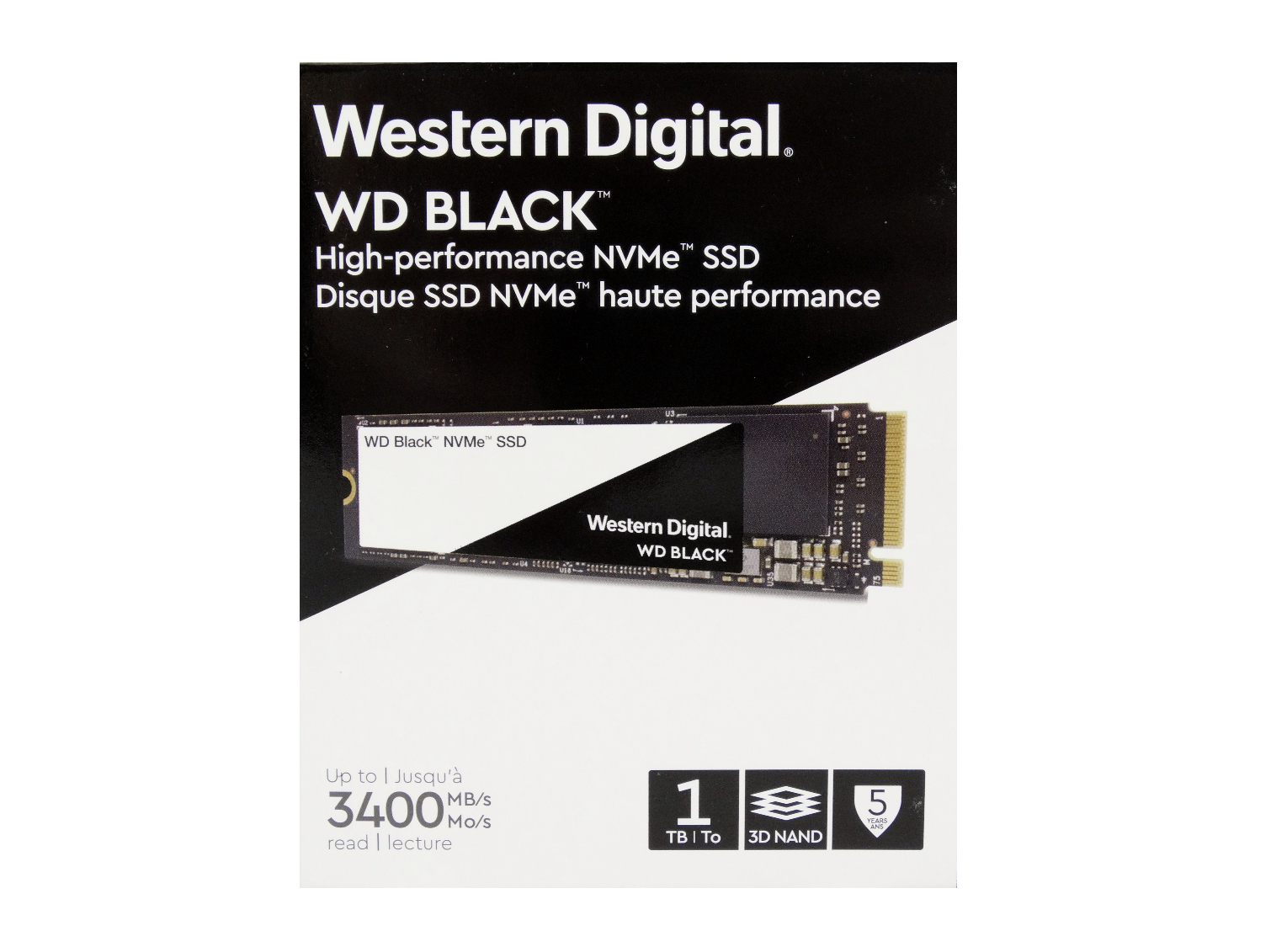
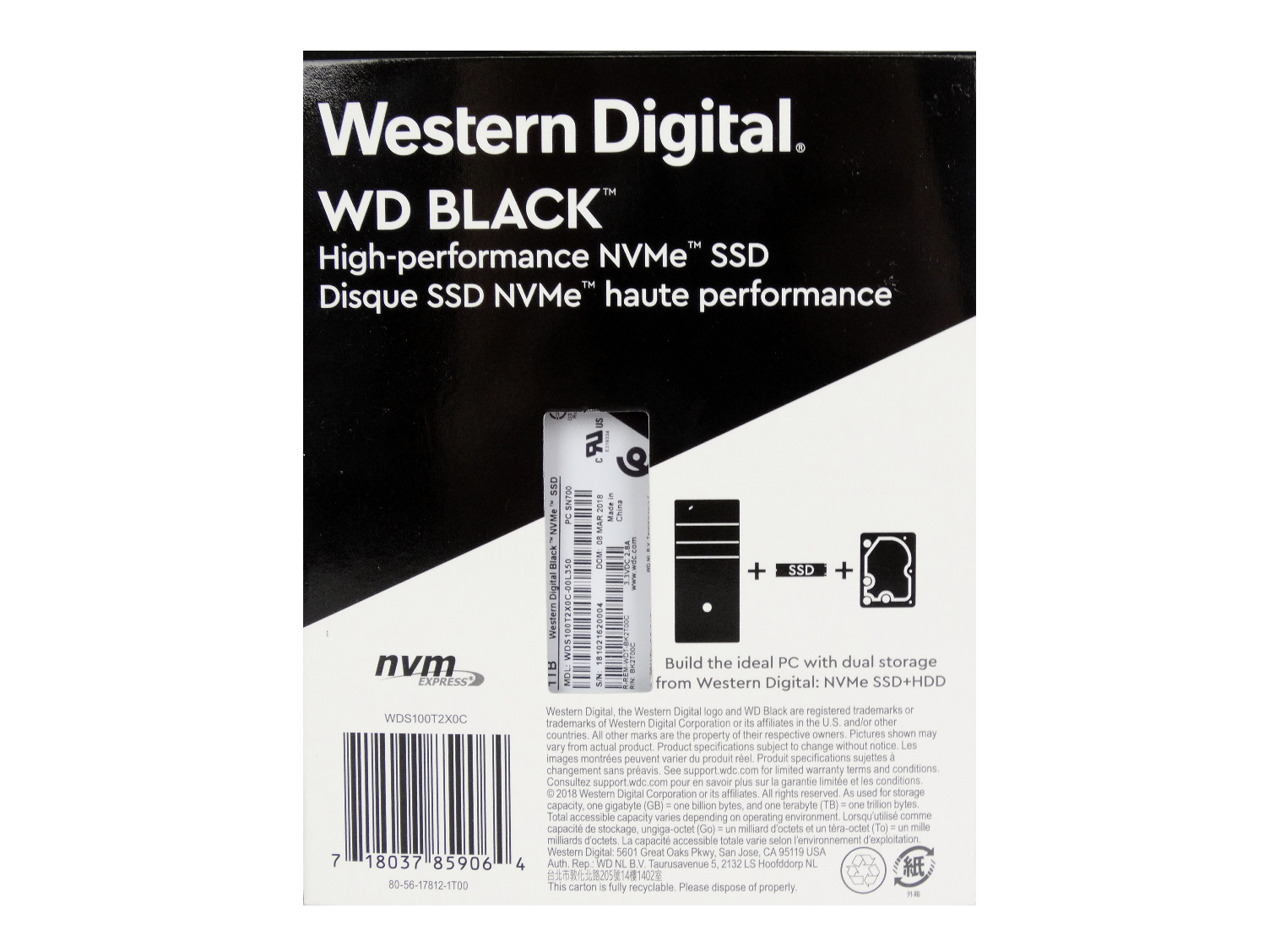
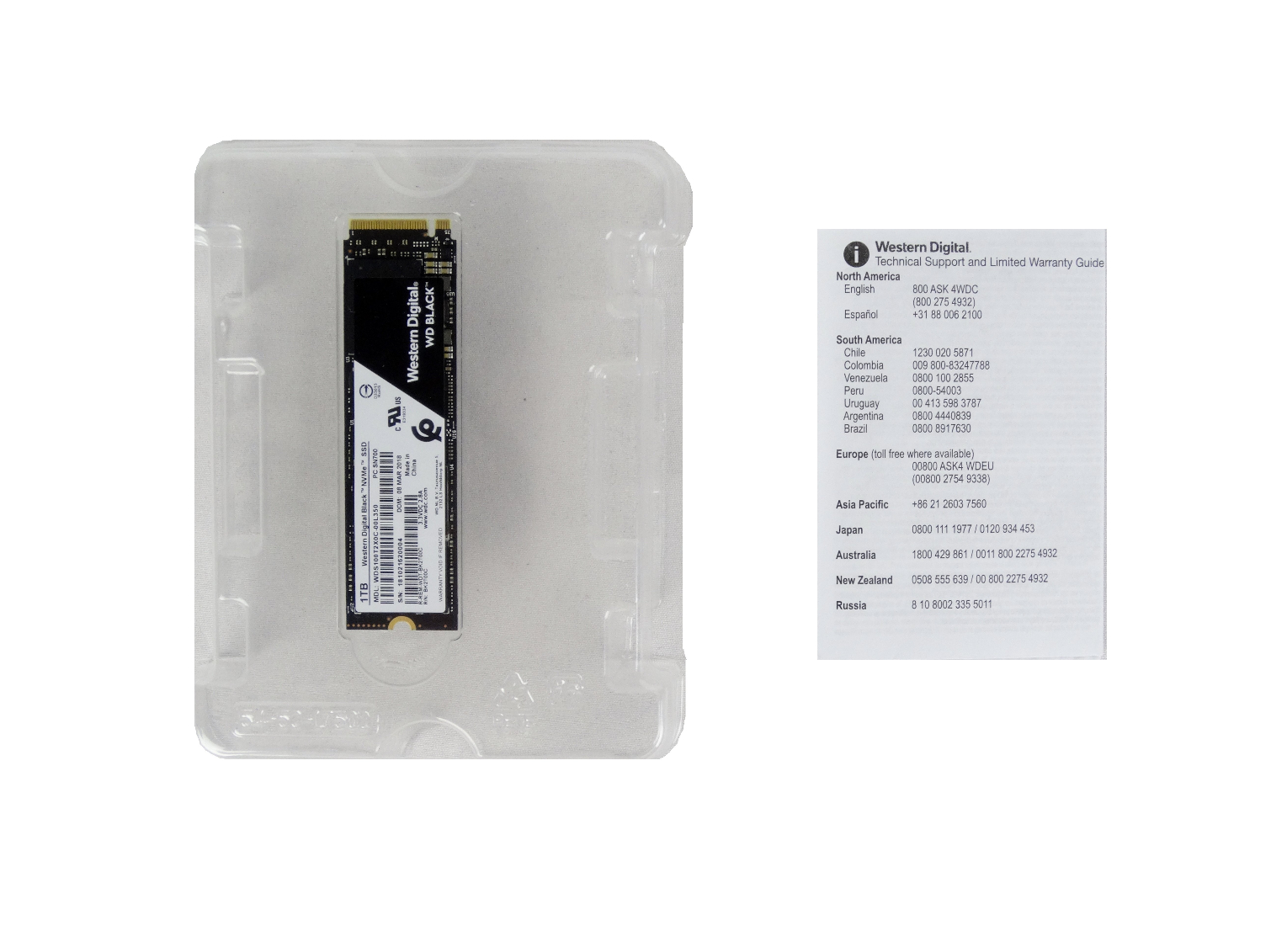
It is difficult to identify the new NVMe version of the WD Black SSD. Western Digital didn't actually put "NVMe" in the product name, even though the previous version was officially named the "WD Black PCIe SSD." The two products will overlap in the market for a brief time even though WD will discontinue the older PCIe version. The issue isn't unique to WD's flash-based products. The WD Black HDD line has shipped with a hundred (we estimate) different versions over the decade its been on the market.
A Closer Look
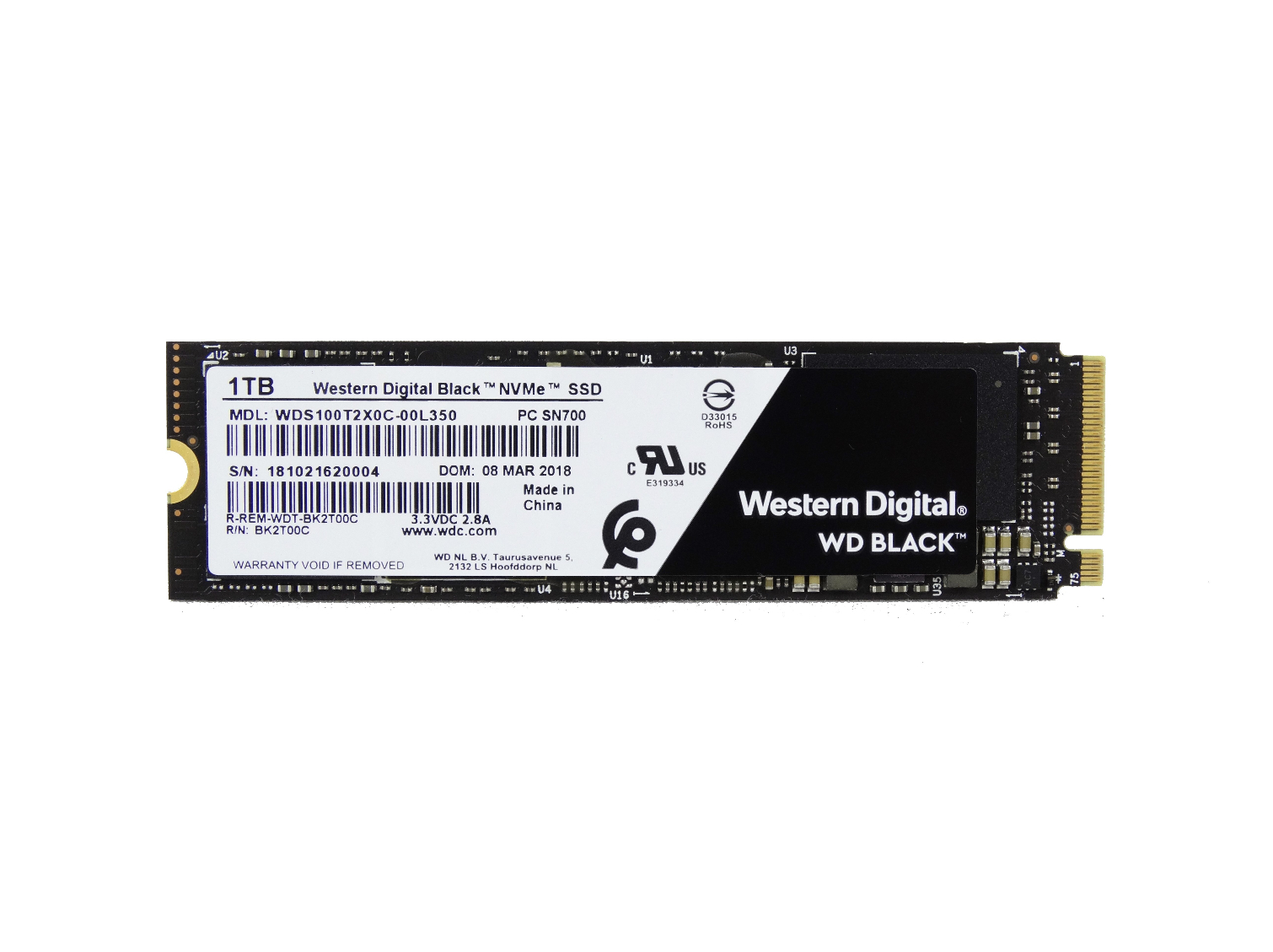
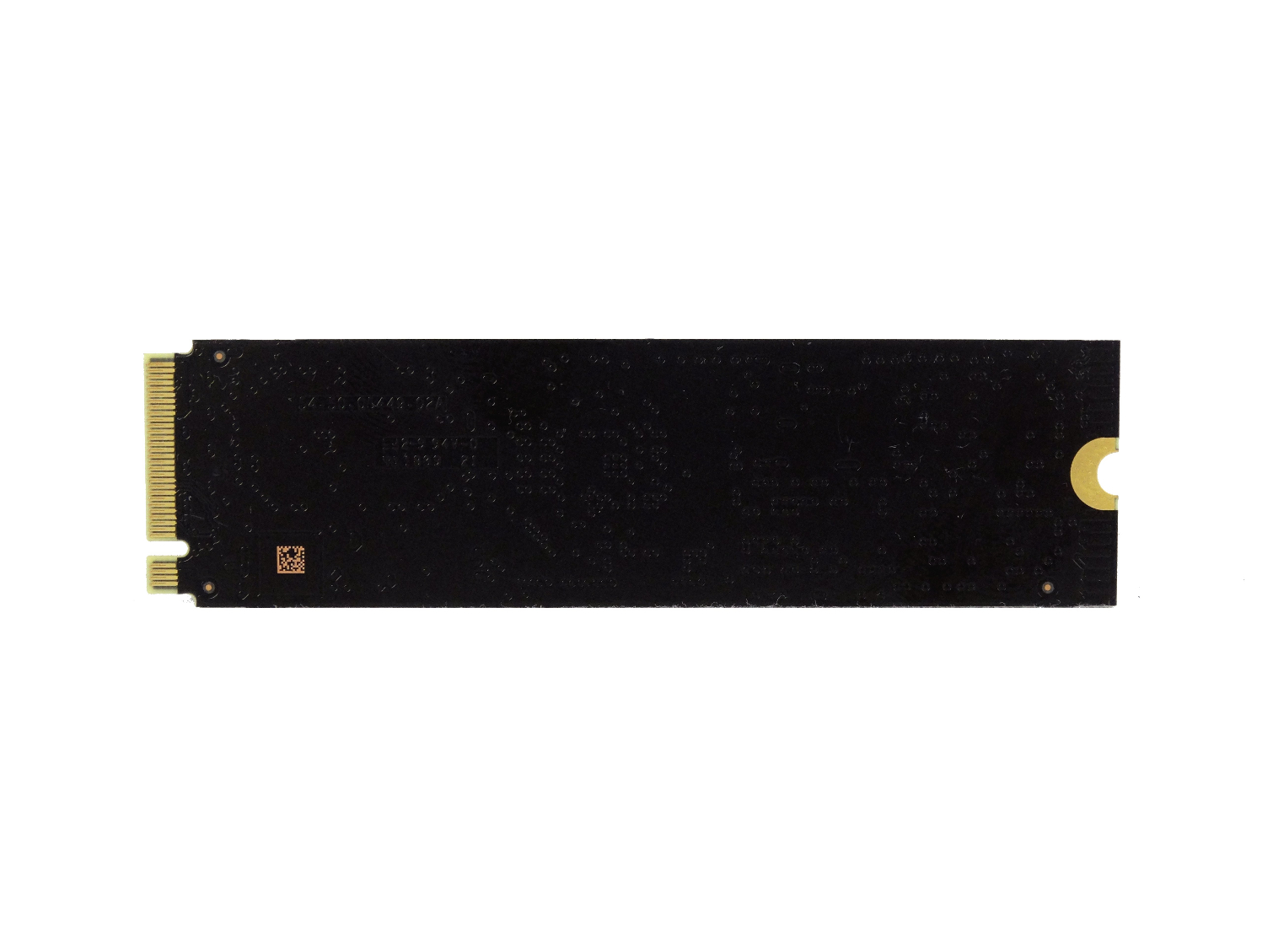
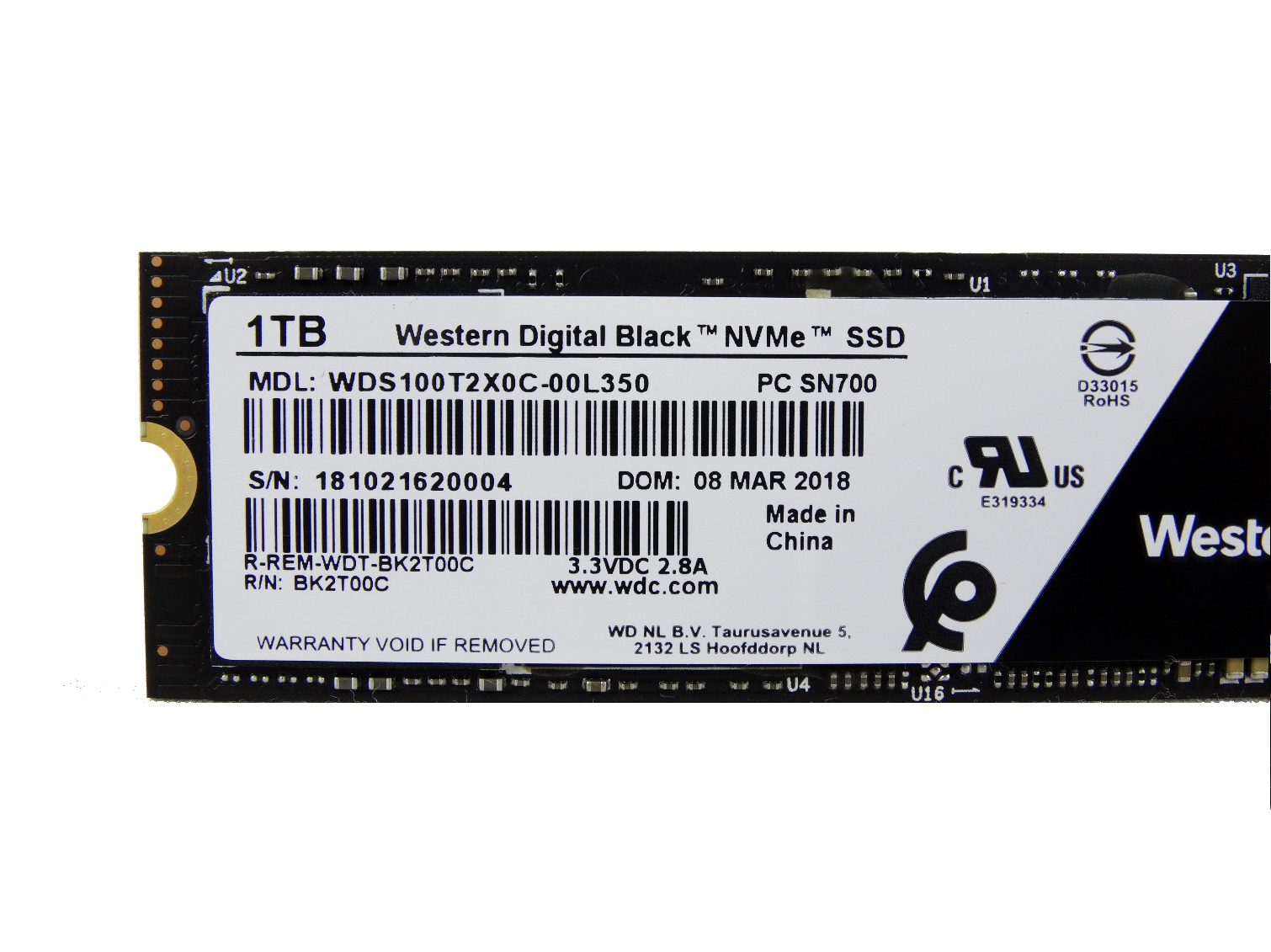
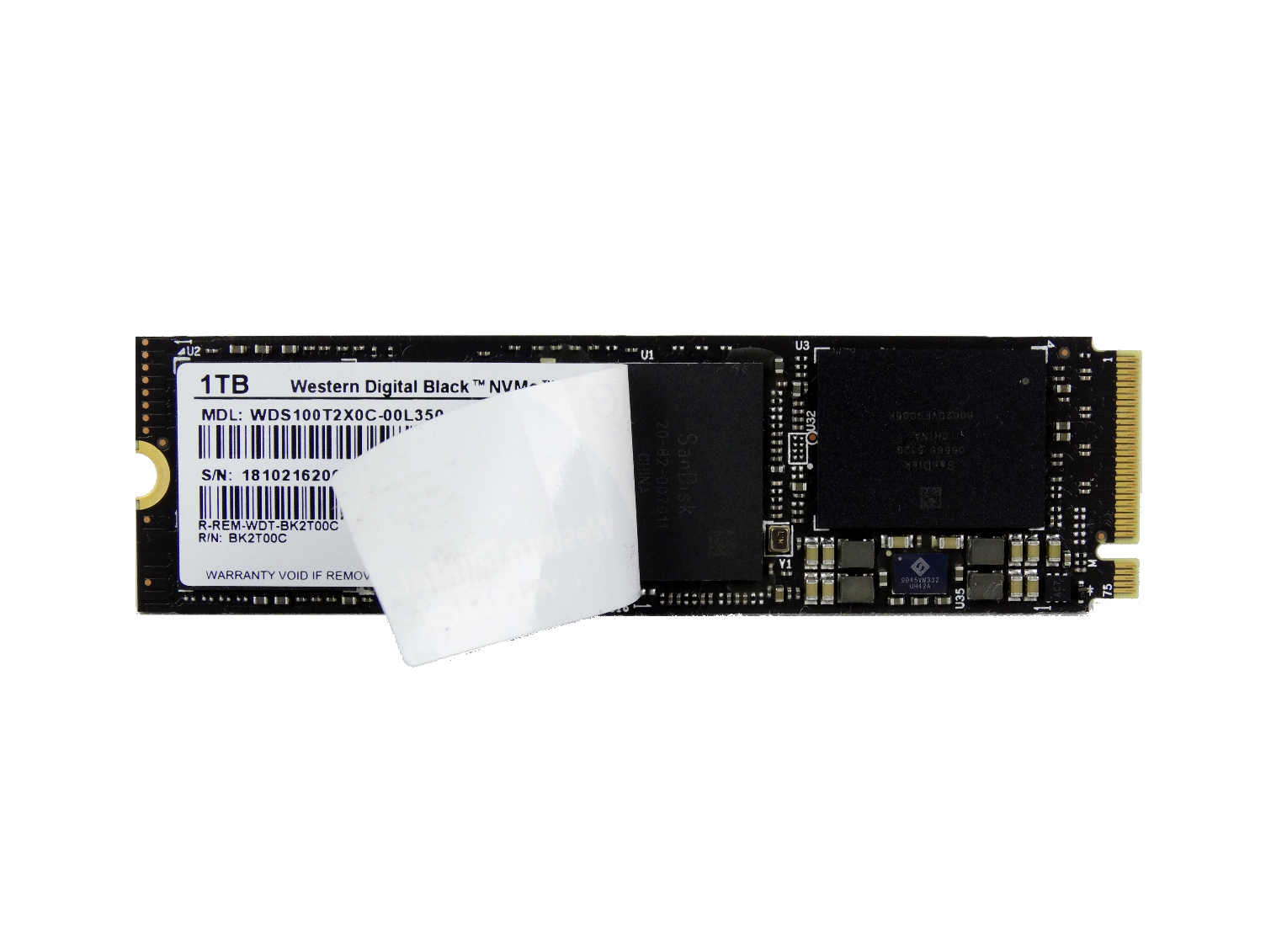
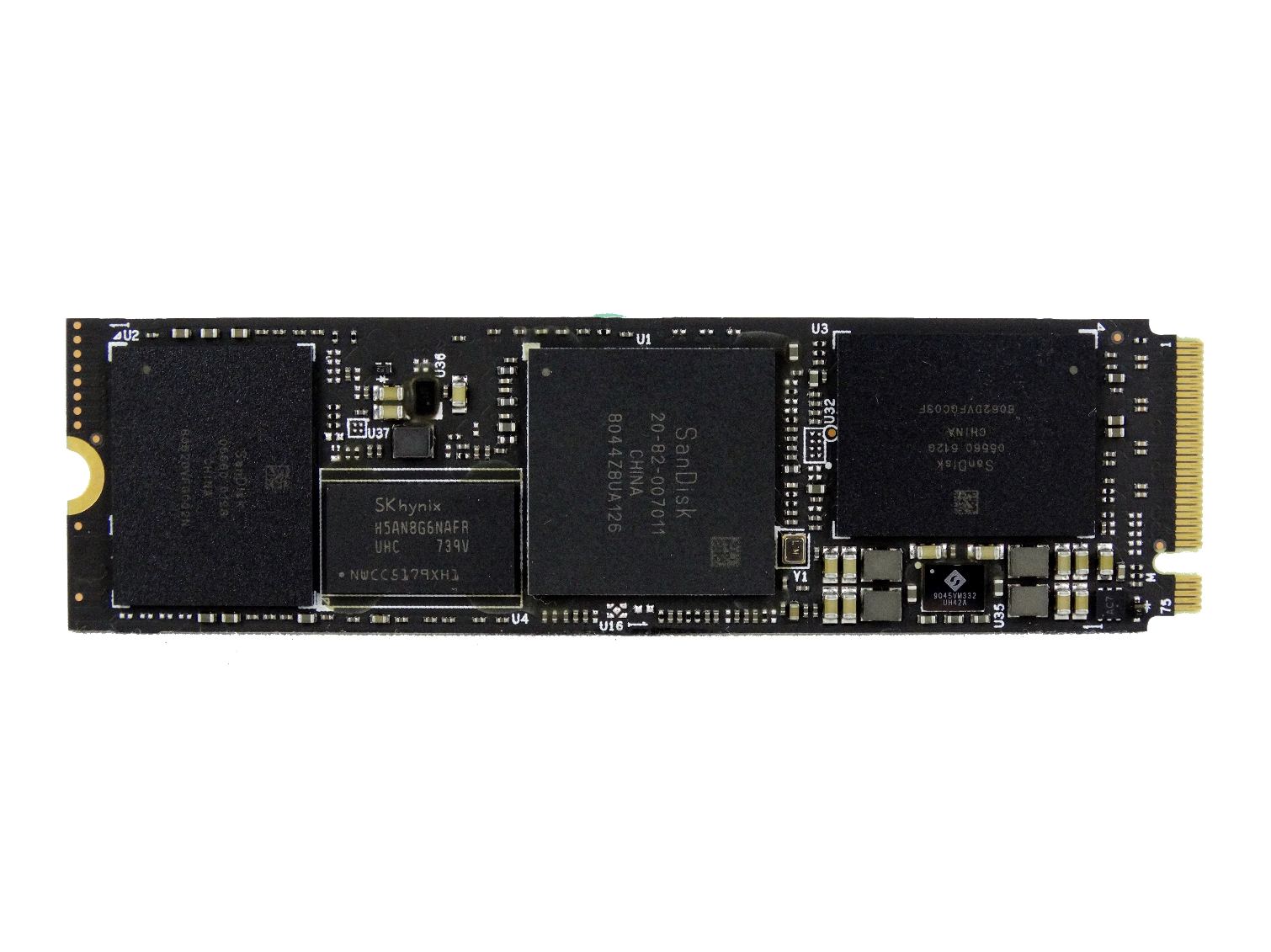
All three capacities conform to the M.2 2280 S3 single-sided form factor. The Black NVMe has a regular paper label, but the SanDisk Extreme has a paper-thin metallic label that may (or may not) reduce thermal throttling.
WD placed the controller in the middle of the PCB to aid cooling and reduce the trace length to the flash. This does increase the trace length slightly from the controller to the port, but it reduces the length of the traces connected to the flash.
MORE: Best SSDs
MORE: How We Test HDDs And SSDs
MORE: All SSD Content

Chris Ramseyer was a senior contributing editor for Tom's Hardware. He tested and reviewed consumer storage.
-
Snipergod87 What does "The 960 EVO uses a five-core ARM design for the 960 Pro and various enterprise variants." mean on page 1Reply -
AgentLozen ReplySniperGod87 said:What does "The 960 EVO uses a five-core ARM design for the 960 Pro and various enterprise variants." mean on page 1
It sounds like the controller that powers both the 960 EVO and the 960 Pro is built on a five-core ARM architecture. Also, Samsung has enterprise level solid state drives built on the same controller.
edit: In retrospect, I'm not sure if I interpreted your question correctly. -
photonboy "The 960 EVO uses a five-core ARM design for the 960 Pro and various enterprise variants."Reply
I guess that's been changed to this:
"WD chose a 28nm tri-core design to target the same market Samsung addresses with the 960 EVO. Samsung uses a five-core ARM design for the 960 Pro and various enterprise variants." -
Ninjawithagun Your benchmarks are wrong. I own a Samsung EVO 960 and am using the latest firmware as well as the most current Samsung NVMe driver for Windows 10. My EVO 960 easily beats the WD Black NVMe in every single benchmark you ran. Something tells me that you did not update your test hardware properly.Reply -
CRamseyer The 960 EVO was updated and retested on December 9th, 2017 for the new burst test results. The results are accurate for the tests. If you use CrystalDisk Mark then your test parameters are different than mine.Reply -
2Be_or_Not2Be Can it be explained how the Toshiba was #1 in the 70% Mixed Sequential Workload when it finished mid to low in every other test, including the sequential read/write tests?Reply -
silver12 In other SSDs reviews you showed the HD Tune Pro test for sequential write. I find that information very interesting. Is there a chance you can add that test?Reply
Thank you very much -
mischon123 Good review. So its basically a broken design with flawed firmware that cannot outperform a 6 year old Samsung product and WD cannot fix the flaws themselves and it took an external firm to tame some of the bugs in the sd design. Now your supposed to pay the same price as you would for a fully working Samsung SSD? Yeahhh, riiiighhht.Reply -
CRamseyer The cache on the 1TB drive is right around 20GB with 128KB blocks. In the future we will publish that data in a line chart. I'm just working on getting a few products retested.Reply -
Geef Does WD use write cache like the Samsung EVO does? Once the cache is used the performance drops off. The Samsung PRO doesn't use cache, its just faster overall. Its a big reason the price difference between the two.Reply
